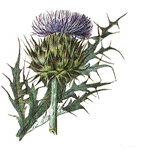Papers in the Biological Sciences

Svata M. Louda Publications
Document Type
Article
Date of this Version
2004
Abstract
Insect-mediated indirect interactions between native plant species recently have been shown to be important determinants of plant performance in a number of ecological communities. However, the potential indirect effects of exotic plant invasion on native plant species are not well understood. We examined whether the presence or proximity of the targeted exotic weed, musk thistle, influences the magnitude of attack on native thistles by the introduced biological control, flowerhead weevil. At the local scale, we quantified weevil egg densities on heads of the native wavyleaf thistle growing at different distances (0 to 100 m) from patches of the exotic thistle. Densities were significantly higher when the native thistle occurred within, vs. 30 to 50 m or 80 to 100 m from, patches of the exotic thistle, indicating a strong local ‘‘spillover effect.’’ At larger scales, we measured egg densities on wavyleaf thistle within grassland landscapes (2.4 x 2.4 km2) with varying infestation densities of the invasive musk thistle. We found that egg densities increased significantly with increasing invasive thistle densities measured at larger site and landscape scales. Because flowerhead weevil feeding substantially reduces seed production of wavyleaf thistle, exotic thistle populations are likely to have indirect negative effects on these native thistles. Our results provide strong empirical evidence that exotic plants can increase the attack on native plant species by maintaining populations of a shared insect herbivore. This finding suggests that persistence of exotic weeds in less-successful biocontrol programs will magnify the nontarget effects of weed biocontrol insects.


Comments
Published in Weed Technology. 2004. Volume 18:1250–1254 (spec. iss #1) Copyright 2004 Weed Science Society of America. Used by permission.